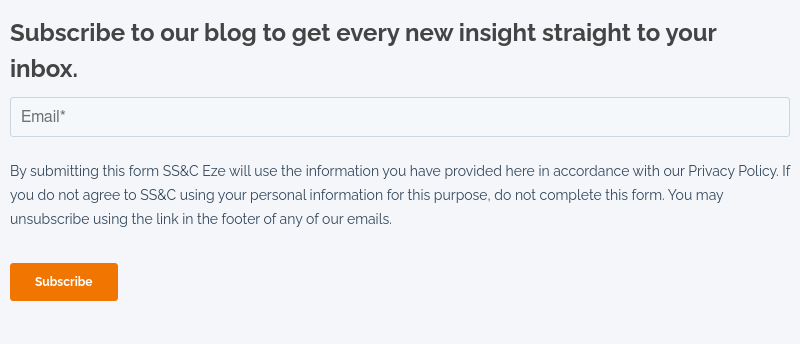The Securities and Exchange Commission (SEC) recently announced it would shorten the settlement cycle for US equity and corporate bond markets from T+2 to T+1. This change is expected to take effect on May 28, 2024.
While this move will have numerous benefits, it is also expected to present new challenges, including operational changes, technology overhauls, and process adaptations.
In this blog post, we share what you need to know today to prepare for this future change.
What is T+1 (Trade +1)?
Coming into effect in May 2024, T+1 means financial institutions will have one business day following a trade to settle, or finalize, the exchange of the security or payment.
Getting to T+1
Since the 1989 stock market crash, the SEC has moved to shorten settlement cycles to reduce risk, exposure, and the impact of defaults.
Since then, United States markets have gone from T+5 to T+3 to the current T+2. When you buy or sell a security today, you’re allowed up to two days for securities to change hands.
The new T+1 settlement cycle will reduce the time allowed to settle trades to one business day. This shorter settlement cycle is a positive development for the US securities markets, helping to make them more efficient while reducing the risk of settlement failures.
In addition, T+1 promises to offer:
- Wider adoption of straight-through-processing (STP)
- Reduction of margin required
- Mitigation of operational and systemic risk
- Reduction in costs and resources from reduced number of unsettled positions

How Can Buy-side Firms Prepare for T+1 Settlement?
The move to T+1 settlement will significantly impact buy-side firms, so it's essential to start planning now to ensure a smooth transition. Some of the key steps that market participants should consider include:
- Communicating with counterparties: Firms should communicate with their counterparties to ensure they are aligned and prepared to move to T+1 settlement. This preparation should include discussing any changes to trade delivery timing and the need to communicate any corrections or changes to trade allocations in real time instead of EOD.
- Automating manual processes: Firms should consider automating any manual pre- and post-trade processes that could delay T+1 settlement. Automating these processes saves time and enables firms to focus on other operational activities.
- Reviewing compliance-related processes: Shortening the settlement cycle will require firms to finalize trade allocation sooner. This shorter cycle may mean updating compliance-related procedures to ensure that all the necessary approvals are in place in a timely manner.
- Reviewing lending practices: The move to T+1 settlement may also impact firms' security lending practices. Firms should review their contract terms to align with the new settlement cycle.
Through careful planning, choosing the right technology, and effective communication, buy-side firms can help ensure a smooth transition to T+1 settlement.
Here to Help – SS&C Eze is Ready for T+1
As an organization, SS&C Eze is ready to support the T+1 settlement cycle. Our current processes and procedures align with what is considered best practices by the Depository Trust & Clearing Corporation (DTCC).
Here is a detailed look at each of the current measures SS&C Eze has in place to conform to the T+1 change:
- Automation to expedite allocation and trade finalization
- Automated release of trades to third parties and matching tools
- Eze Managed Operations for pre-trade and post-trade functionality
- Electronic matching and allocation delivery with the executing broker
- Ability to automate manual trade delivery instructions to various market participants
- 24-hour service team coverage offering foreign clients investing in US markets local support when needed
- Daily fails reporting notifying investment managers of trade failures
As we approach the shortened settlement cycle going into effect, we'll continue to share updates the industry needs to be T+1 compliant. To ensure you never miss an update on any of the latest industry trends, subscribe to our blog. And if you have questions or need more details on T+1, contact your client success manager or reach out via our website.

